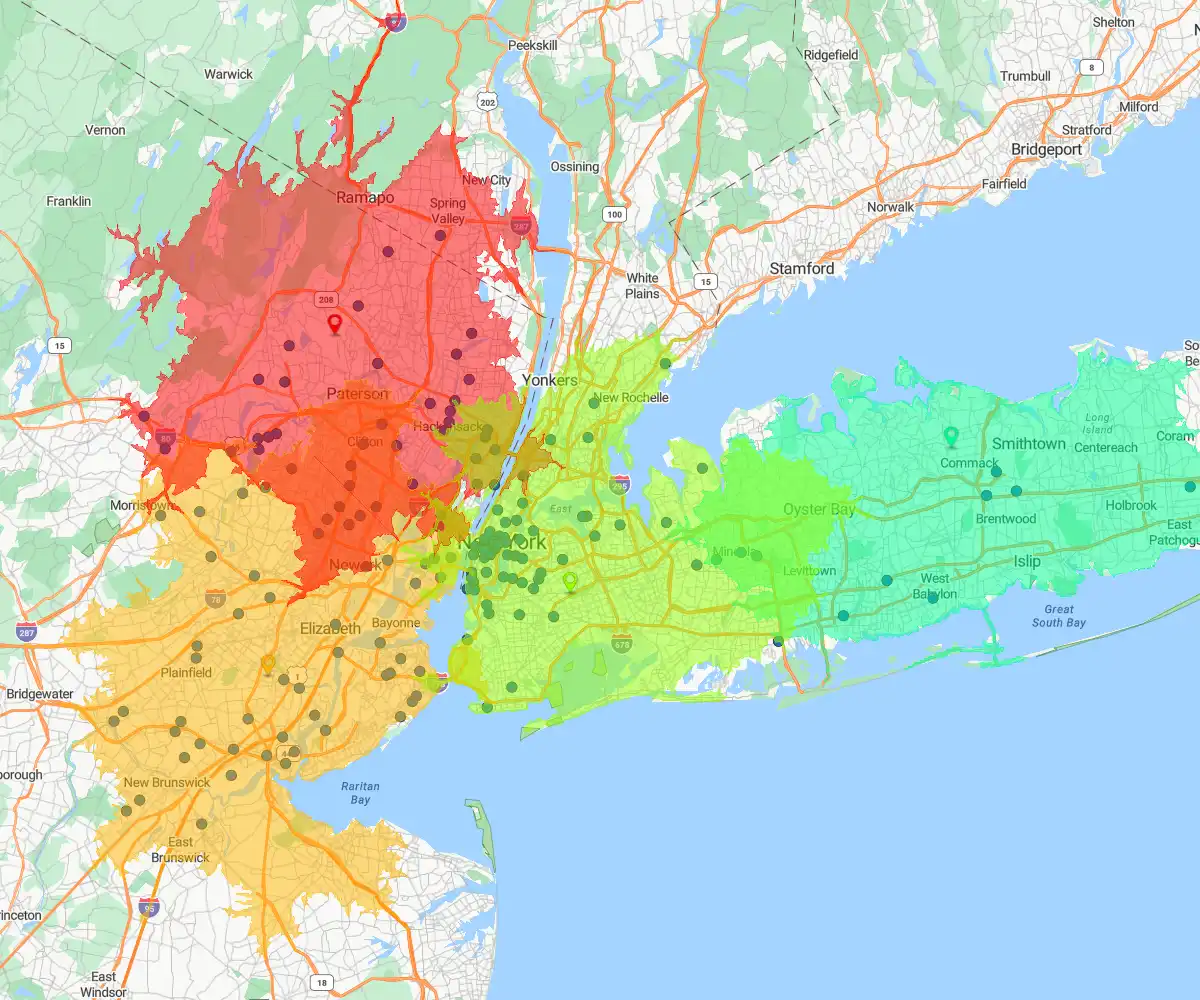Quick answer
Key Takeaways
- Area mapping helps you visualize customer and lead distribution so you can address gaps and overlaps
- Field coverage improves when reps are assigned strategically using geographic data
- Balanced workloads boost morale and performance, reducing burnout and turnover
- Simulation tools enable data-driven planning for campaigns, expansions, and reorganizations
- Team empowerment grows when everyone works from a shared source of truth on territory ownership
As a sales leader, you'll be well aware of the link between the right location and successful sales. With a better understanding of your key locations, you have the power to make better-informed decisions. That's why area mapping in sales can help you and your team work smarter, cover more ground, and ultimately close more deals.
5 Key Benefits of Area
Mapping for Sales Teams
Territory mapping software can help you close more deals and generate more revenue. It supports sales in the following ways:
- Improves understanding of customer and lead distribution
- Boosts sales field coverage
- Ensures equitable workloads for your sales team
- Simulates “what-if” scenarios to help you make informed decisions
- Empowers and motivates your reps
Let’s look at these benefits in more detail.
Benefit 1
Understand Customer & Lead Distribution
By plotting leads and customers on a map, you can easily see:
- The areas with the highest concentrations of customers
- Underperforming or underserved areas
- Where your sales reps are under- or over-assigned
This helps you pinpoint blind spots that spreadsheets alone can't show you.
When you understand where your leads and customers are, you can balance territories to avoid overlaps or missed opportunities, assign your reps more strategically, and improve resource allocation.
Benefit 2
Improve Field Coverage With Visual Clarity
When you analyze sales coverage with geospatial data, you get the full picture, helping you make well-informed decisions. Area mapping gives you and your team the clarity and context you need to cover ground not only geographically, but strategically.
A sales area map will show where your field reps are active, with a clear visual breakdown of territory coverage, so you can quickly identify:
- Overlapping efforts in the same area
- Gaps where no one is following up on leads
- Regions that may be over- or under-resourced
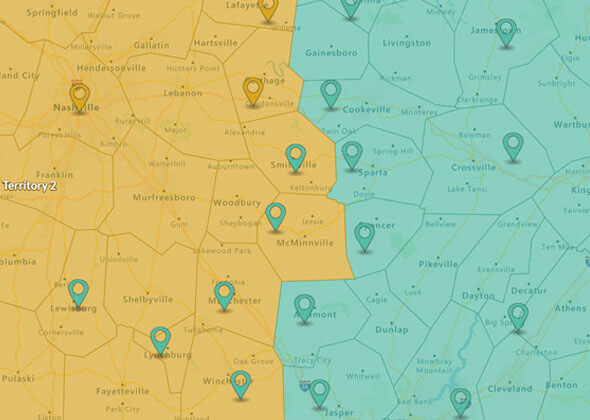
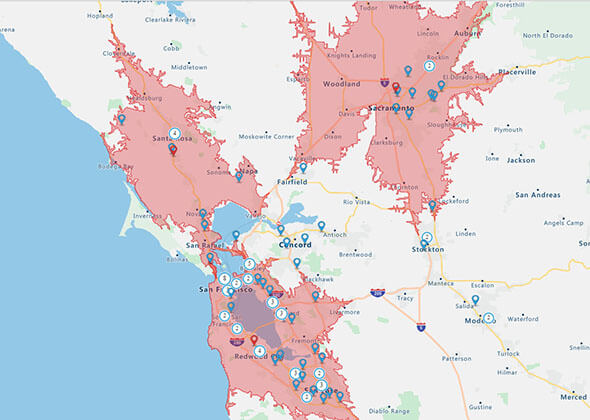
You can then create a sales strategy that takes full advantage of these insights and gives your reps more opportunities to close deals.
Benefit 3
Balance Workloads Across Reps
Rather than relying on assumptions or guesswork, a sales area map gives you data that shows where rep accounts are concentrated and where they're sparse. This lets you spot and correct imbalances in your team's workloads.
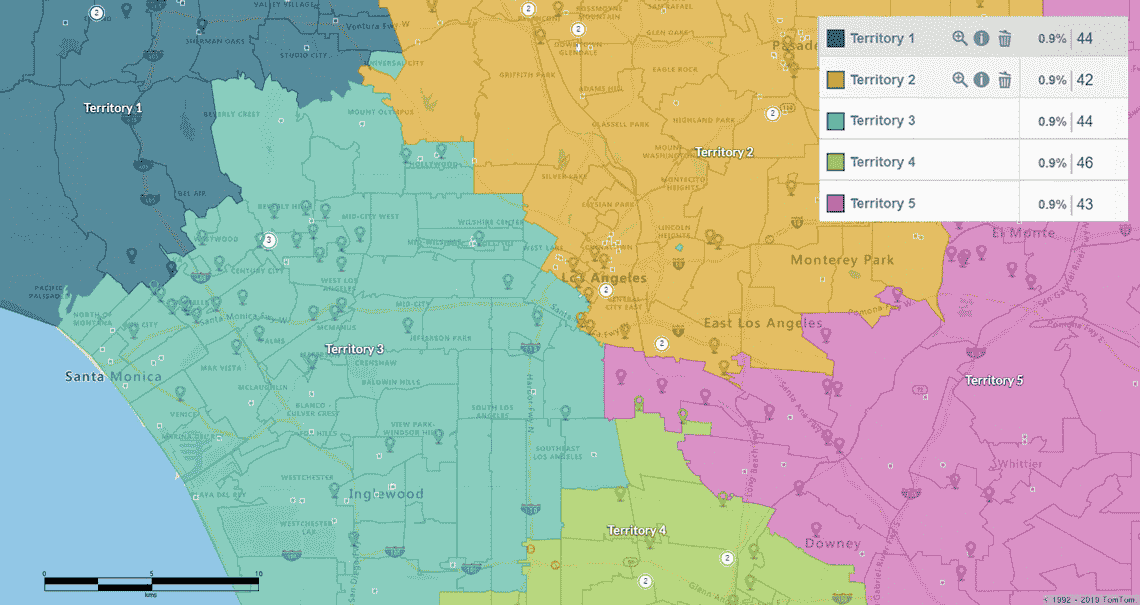
Creating equitable workloads isn't just about location; it's about opportunity and effort. Area mapping lets you factor in details like account potential and travel time. You can use mapping to ensure that each rep has enough leads and gets a fair chance to succeed without burning out or wasting their efforts.
Benefit 4
Simulate Growth, Campaigns & Reorganizations
- Growth: Area mapping in sales lets you model “what-if” scenarios. Are you considering expanding into a new region or opening another branch? With area mapping, you can overlay market potential, customer density, and competitor locations to identify high-opportunity zones before you make your move.
- Campaigns: Area mapping can also help you create more targeted, higher-impact regional campaigns. Use customer profile data to identify the best-fit territories for your campaign. You can also weed out oversaturated or low-potential areas and avoid using your resources there.
- Reorganizations: Whether you’re merging territories or onboarding new reps, area mapping in sales can support a smooth transition with minimal disruption. Simulate new territory boundaries and model different configurations, so you can make changes with confidence.
Benefit 5
Empower and Motivate Your Sales Team
Has your team's morale taken a dip? Imbalanced sales territories can be tough on your sales reps. When some people have too many leads while others don't have enough, you end up rewarding the territory rather than the reps themselves.
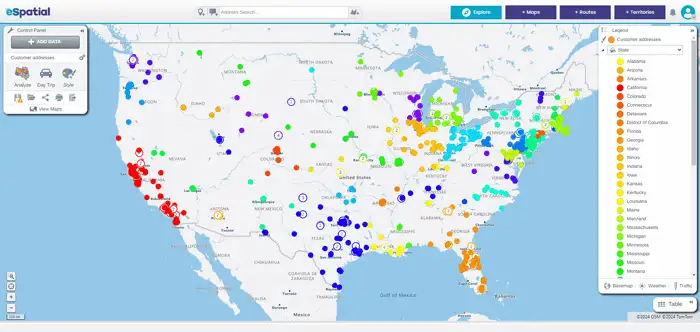
A balanced workload will help alleviate the stress of being overworked in busy sales areas while providing everyone with the opportunity to succeed. When your team feels they have fair opportunities without being overworked, they're more motivated. This leads to lower staff turnover and ultimately more closed deals.
Once you've mapped your sales areas, you should share these maps with your entire team. That way, you have full transparency, with everyone working from the same source of truth regarding who owns what.
When to Use Area Mapping
Area mapping in sales is crucial for any scenario where location affects sales performance. You can use area mapping when:
-
Evaluating sales performance by region
-
Redesigning or balancing sales territories
-
Planning field sales routes
-
Expanding or targeting new markets
-
Responding to market changes
-
Aligning sales with marketing campaigns
See our sales territory mapping guide to get started.


